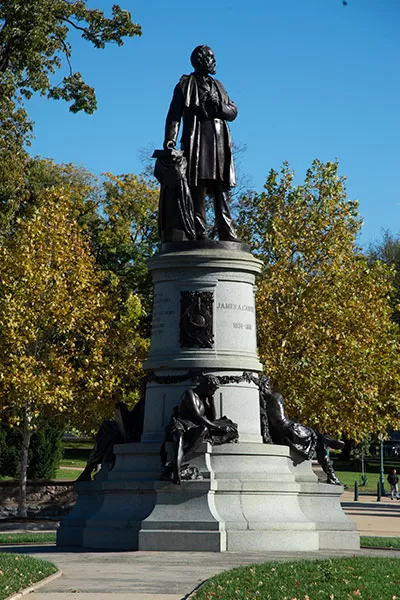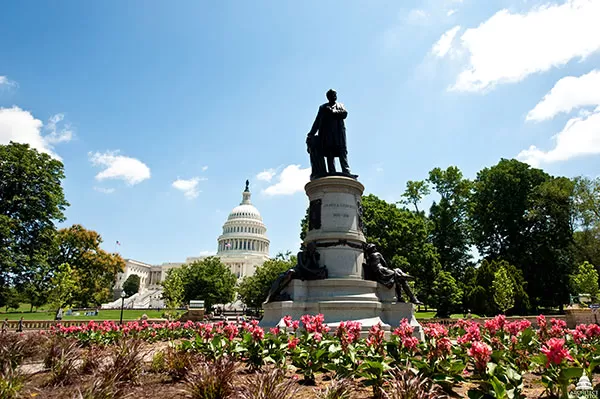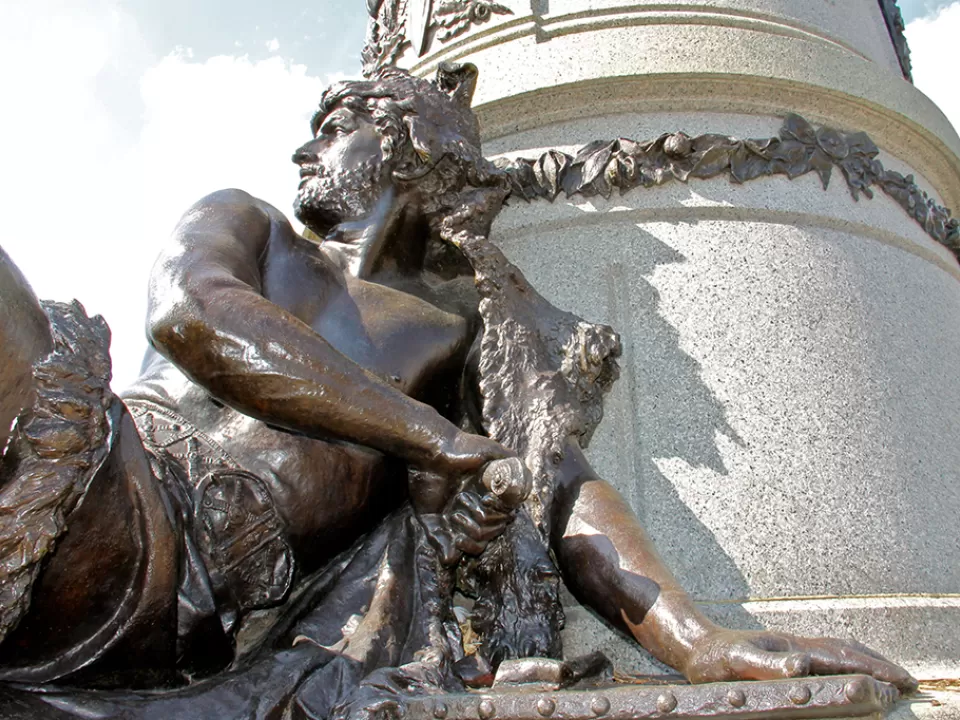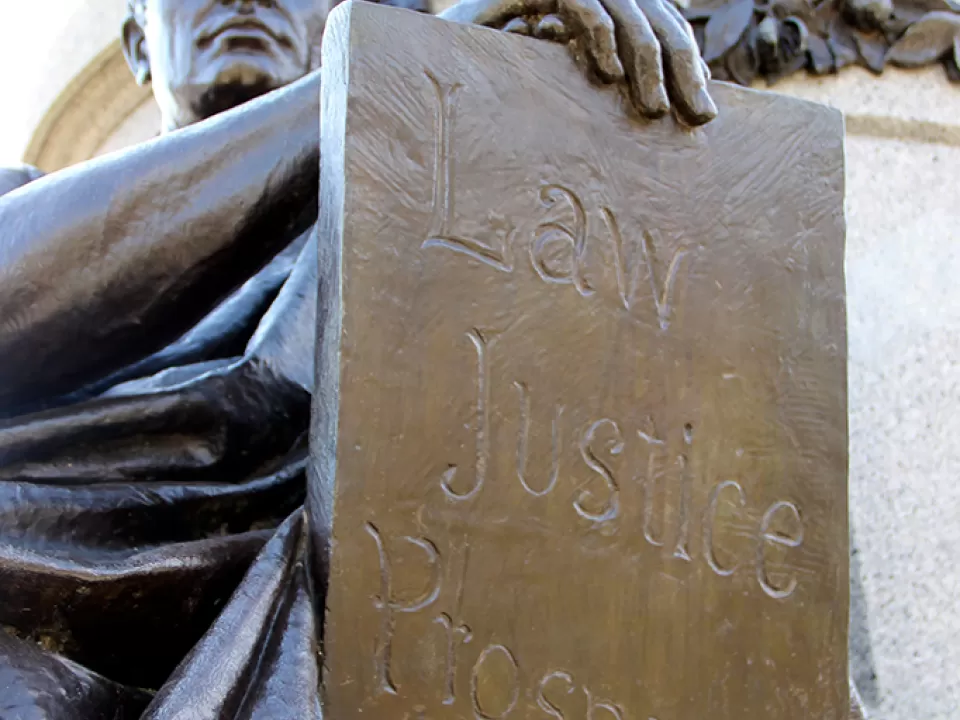Image Gallery


The sculptural monument to President James A. Garfield by John Quincy Adams Ward (1830-1910), cast by The Henry-Bonnard Co. of New York, with a pedestal designed by Richard Morris Hunt, is an outstanding example of American sculpture. The monument stands in the circle at First Street, S.W., and Maryland Avenue, where it was unveiled on May 12, 1887.
President Garfield was elected in 1880 and was assassinated in 1881 by a disgruntled office-seeker after serving only four months of his term. The memorial was commissioned in 1884 by the Society of the Army of the Cumberland, of which Garfield had been a member. The society raised almost $28,000 to pay the sculptor. Some of the funds were raised by The Garfield Monument Fair, which was held in the Rotunda and Statuary Hall in 1882. Also in that year, Congress appropriated to the Society $7,500 in funds from the sale of condemned cannons (22 Stat. 28, signed March 11, 1882); in 1884 it appropriated $30,000 for the pedestal (Sundry Civil Appropriation Act of July 7, 1884, 23 Stat. 216). The monument was incorporated into the Capitol Grounds in 1975 (Public Law 93-198, December 24, 1973, 87 Stat. 828, effective January 2, 1975).
The tapered, cylindrical granite pedestal holds four over-life-size bronze figures, with the portrait statue of Garfield at the top and three allegorical figures representing different phases of his career below. Garfield is depicted in giving a speech, gazing intently outward with a sheaf of papers in his left hand, his right hand rests on a book on a draped column. The toe of one shoe projects over the edge of the base, giving the work a sense of vigor and movement.



Below him, the young student, draped in a sheep skin, suggests Garfield's early work as a teacher. The bearded, middle-aged warrior, wearing a wolf skin, represents his Saxon ancestry and his military career during the Civil War. The older statesman, dressed in a toga and holding a tablet inscribed "Law/Justice/Prosperity," symbolizes Garfield's achievements as congressman, senator, and president. A bronze plaque with related symbols is mounted above each figure, and a unifying bronze garland encircles the pedestal.
Sculptor John Quincy Adams Ward was known for his portraits and for working directly from nature rather than from classical art, and his portrait of Garfield is particularly life-like since the two men were friends. The reclining figures were influenced by Michelangelo's Medici Tomb, while the overall composition shows awareness of the French Beaux-Arts style. Ward created convincing details of form and texture as well as a dynamic sculptural composition.
The conservation treatment carried out in 1992 was the first that the Garfield Monument has undergone. In the century since the work's unveiling, its bronze elements developed a layer of light green and black corrosion. This disfiguring corrosion remains active in the presence of moisture and pollutants.
The conservation of the monument included the use of low-pressure water to remove most of the loose corrosion layer from the bronze surfaces. After a corrosion inhibitor was applied, the bronze was repatinated to the dark brown color indicated by historical research and comparison with other statues by Ward cast by the same foundry. The bronze was protected from further corrosion by an acrylic lacquer and wax. Repairs were also made to the lead joints and the surrounding sidewalks and curbs. These efforts ensured that, for the first time in many decades, John Quincy Adams Ward's monument has the appearance he intended.

